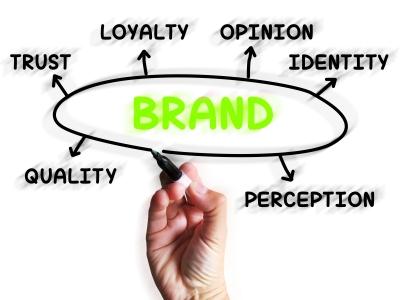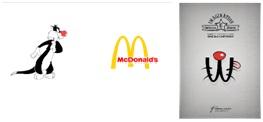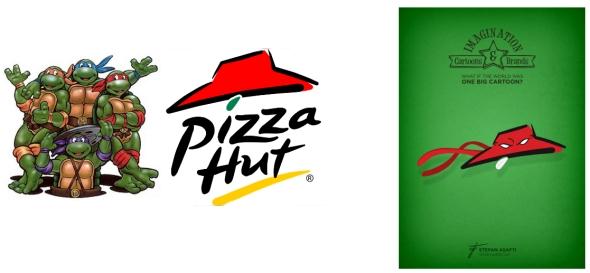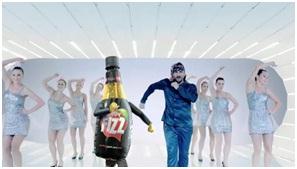Click on this to redirect to original source





“Brand is just a perception, and perception will match reality over time. Sometimes it will be ahead, other times it will be behind. But brand is simply a collective impression some have about a product.”
- Elon Musk
Brands faze in and out of our lives. Only some leave an impression too deep to erase from our memory. Notice when you pick up an Amul product off the shelf in a grocery store, what do you look for? Or rather what catches your eye first? We don’t go looking for packing that says Amul but instead our mind automatically focuses on a polka-dot-frock girl on the cover. Such is the power of that one brand character who has been entertaining us for half a century now. Since the 1960s, this adorable brand character has not only entertained us but also drawn our attention towards social issues.

Image Courtesy: freedigitalphotos.net, Stuart Miles
‘Prevent malaria, Spread amularia’ shows the Amul girl arm wrestling with a malaria-spreading mosquito in an attempt to throw light on the deadly disease Malaria while campaigning for Amul butter. Would that be more or less convincing if a real person had done that? One of the advantages of being a brand character was that the Amul girl got away with numerous political satires. Here’s another example but of a brand ambassador. Batting maestro Sachin Ramesh Tendulkar , who sits on the pinnacle of world cricket, promoted the brand MRF for almost 10 years and we would be absolutely correct in saying that most of us still associate MRF with Tendulkar. When Sachin started using the Adidas cricket equipment after his long-term association with MRF ended, we certainly missed the familiar logo ‘MRF – Genius’. For cricket crazy fans, MRF would rather be Sachin’s bat and not a Tyre Company. Probably this is how a superstar brand ambassador popularizes the brand.
Moving from examples to the ideology, we wonder what goes inside the mind of a marketer when deciding upon a Brand Ambassador or a Brand Character. When does a brand go for real people and do they necessarily opt for celebrities or superstars only? When does a brand come up with an entirely new invention of an animated character? Where do we see the pug in Hutch ads – a brand ambassador or a brand character? We are only trying to show you our perspective here. Companies go for well-known personalities to leverage on their stardom. They essentially look for someone who relates to their product like a perfect embodiment. Ambassadors are not only good leaders and speakers, they are technologically well up-to-date too in today’s 4G generation. They are credible and trustworthy. While choosing a brand ambassador one has to go with the existing choices whereas in a brand character one works the reverse way. There is a freedom to design a character cut to the product. A brand ambassador provides credibility to the brand by its action and persona; on the other hand a brand character can be modified depending upon the whims and fancies of the brand. And while we may not be able to tell which one – brand ambassador or brand character, we can certainly say that the Hutch Puppy is essentially a mix of both.
What happens when a star falters and his credibility reflects on the brand? We illustrate with an example here. Nike in the preceding year had two of its major brand ambassadors default big time. Lance Armstrong the face of Nike in cycling and Tiger Woods the face of Nike in Golf. Nike scraped the contract with Lance upon his doping revelation whereas Tiger Woods continues to be the face of Nike in Golf even after his adultery. The reason simply being Nike being a sports performance brand drew a line between personal and professional arena. In the case of Tiger Woods, the player gave a public apology and soon resumed his number one world title too, for a short while. Seeing the credentials of the player, Nike went ahead to make one of the best golf commercials till date ‘No Cup is Safe’.

To further come to a consensus let’s look at more examples. Remember Ronald MacDonald , plays the clown of, err what was the name of that fast food chain? Or the battery powered Bunny for energizer batteries and then there is the iconic Michelin Tire Man made out of the product itself and widely considered as the benchmark when it comes to developing a brand. The mascot even featured in a couple of Hollywood flicks one of which is Ghostbusters (1984). On the other hand peppy Parineeti Chopra endorses all pep up brands like Kurkure, Nivea, Maaza, Spinz, WeChat, Pantene and Mahindra. Ranbir Kapoor, the young heartthrob of the nation, endorses Pepsi, Panasonic, Tata DoCoMo, Nissan and the Spanish football club FC Barcelona.

There was a really intriguing article put forward by John Yong titled ‘If Cartoon Characters Were Brand Ambassadors’ in which he writes about the work of Romania-based graphic designers Stefan Asafti in ‘Imagination, Cartoons & Brands’. Asafti has quipped, how would great brands look like if cartoon characters inspired them? Look at the ingenious images and go all nostalgic.

Coming back, Airtel has never used brand characters and Vodafone is heavily bent on them. Airtel advertisements went viral with ‘har ek friend zaruri hota hai’ and ‘Jo tera hai who mera hai’. These advertisements took people from ordinary walks of life as brand ambassadors and focused on ‘friendship’ to create an emotional connect with the youth. Airtel’s digital TV commercials casted real life celebrity couple Saifeena to exhibit more genuineness of the brand. Vodafone on the other hand struck the chords in the hearts of millions by inventing the ZooZoos for IPL season 2. Though strategies of both the companies converted into sales, let us also have a look at the cost structure. ZooZoo’s, it cost 3 crore to shoot the entire ad campaign as compared to Airtel’s Saifeena who took back home 6 crore for a 10 second commercial. That’s a whopping difference.

Now, this is a quick one for you to think. ‘Appy Fizz’ - first thing that comes to your mind. Quick, I said. Is it the image of brand ambassador Saif Ali Khan or brand character Appy Fizz? Undoubtedly to us, it is the bottle mascot jumping up and down with over enthusiasm. Here is an ambassador and a character working together to promote the drink, and each individual in the audience could have a different pick. We wonder if one alone could have solely created the impact of the two together. Imagine Mr. Appy Fizz but no Saif Ali Khan. Well there isn’t much to imagine. Saif Ali Khan only started hanging out with Appy Fizz in the year 2012. Incidentally Parle agro, the parent company of Appy Fizz, had never used a Bollywood actor for any of its brand before. Before Saif, Appy Fizz operated alone and displayed its wit and humor to a group of four teenagers. Then came the cousin Grappo Fizz in the picture. The tagline went from one to two cool drinks to hang out with. And finally the entry of Saif brought in a cooler quotient. Appy Fizz is a youth drink and Saif a youth icon. The response in return turned out to be great.
So, to sum it up, Brand ambassador and brand characters are two sides of a coin. It’s at the discretion of the brand manager to ensure a positive outcome no matter which side the coin reveals. He can even try for a hung coin and hope that the risk pays off. Both have their pros and cons, which vary depending upon the brand and its target audience. A kid’s product is more likely to be associated and depicted by a brand character and chances are you won’t fail until and unless the product is really not up to the mark. But you wouldn’t dare to use the same for a Hair dye and sit back anticipating a good profit margin. In the very end it boils down to the fact that market is a casino where you are trying your luck every day, sometimes it works, sometimes it doesn’t. No magical formula to guarantee you success. So as the saying goes, “In marketing I've seen only one strategy that can't miss - and that is to market to your best customers first, your best prospects second and the rest of the world last” (John Romero), so operate at your own risk and go all creative with Brand Ambassadors and Brand Characters. We love to watch them all.
This article has been authored by Nalini Singh and Pranjal Parihar from IIFT Kolkata
No comments:
Post a Comment